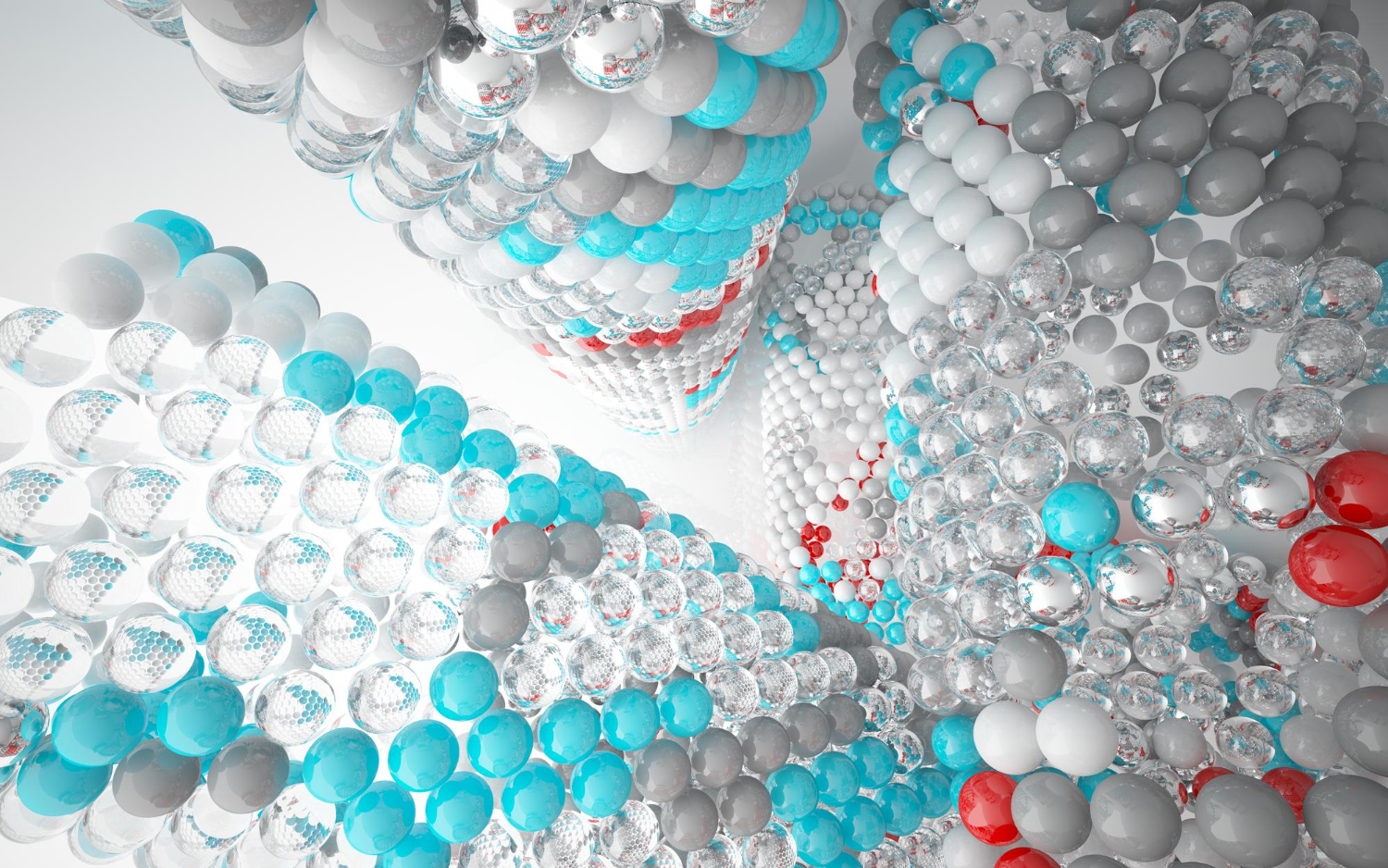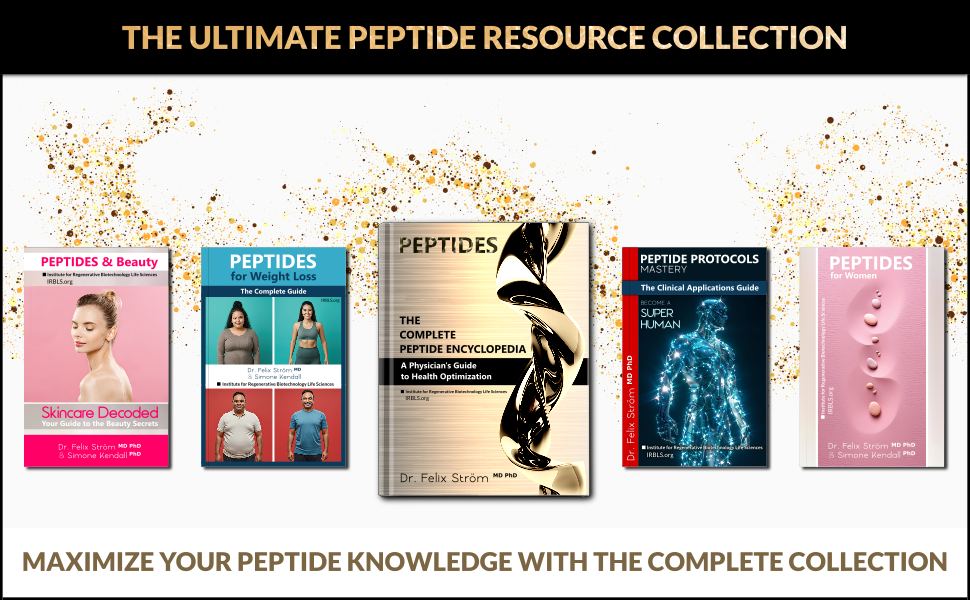The Art of Synergy: Understanding Peptide Stacking for Enhanced Results
Amplifying Potential: Exploring the Synergistic Power of Peptide Stacks
As we delve deeper into the world of peptide therapy, it becomes clear that individual peptides offer remarkable benefits for a wide range of health and wellness goals. However, the science and application of peptides often extend beyond single-agent use. “Peptide stacking” – the practice of strategically combining two or more different peptides – is gaining increasing attention for its potential to elicit synergistic effects, leading to more profound and comprehensive results than might be achievable with individual peptides alone. At the Institute for Regenerative Biotechnology & Life Sciences (IRBLS), we aim to demystify complex therapeutic concepts. This article will explore the rationale behind peptide stacking, common examples of effective stacks, and important considerations for this advanced approach.
The concept of synergy, where the combined effect of multiple agents is greater than the sum of their individual effects (1+1=3), is well-established in pharmacology. In peptide therapy, stacking leverages this principle by combining peptides that may act on different pathways or have complementary mechanisms of action to achieve a common goal, be it enhanced muscle growth, accelerated injury repair, or more comprehensive anti-aging effects.
Why Consider Peptide Stacking? The Rationale Behind Combined Therapies
The primary reasons for employing peptide stacks include:
- Targeting Multiple Pathways: Many physiological processes are complex and regulated by multiple signaling pathways. A single peptide might primarily influence one pathway. By combining peptides that target different, yet related, pathways, a more comprehensive effect can be achieved. For example, in muscle growth, one peptide might stimulate GH release, while another might directly sensitize muscle cells to IGF-1.
- Enhancing Efficacy: Some peptides can potentiate the effects of others. For instance, a GHRH analog and a GHRP work on different receptors in the pituitary gland to stimulate GH release; using them together often results in a significantly greater GH pulse than either used alone.
- Reducing Potential Side Effects or Dosage: In some cases, combining lower doses of multiple peptides might achieve the desired effect with a reduced risk of side effects compared to using a higher dose of a single peptide.
- Addressing Multifaceted Conditions: Many health goals or conditions have multiple contributing factors. For example, comprehensive anti-aging might involve addressing hormonal decline, oxidative stress, and cellular repair. A stack could target these different aspects simultaneously.
- Mimicking Natural Physiological Pulses: Some stacks are designed to mimic the body’s natural pulsatile release of hormones, which can be more effective and safer than continuous stimulation.
Common Examples of Peptide Stacks and Their Applications
Several peptide stacks have become popular due to their demonstrated efficacy. It is crucial to remember that peptide stacking is an advanced strategy and should only be undertaken under the guidance of a healthcare professional experienced in peptide therapy.
1. Growth Hormone Secretagogue Stacks (e.g., CJC-1295 with Ipamorelin)
This is perhaps one of the most well-known and widely used peptide stacks, particularly for anti-aging, muscle growth, and fat loss.
- Components: Typically combines a GHRH analog (like CJC-1295, often with DAC for extended action, or Modified GRF 1-29 which is CJC-1295 without DAC) with a GHRP (like Ipamorelin, GHRP-2, or GHRP-6).
- Rationale: GHRHs and GHRPs stimulate GH release via different receptors and mechanisms in the pituitary gland. Their combined action leads to a synergistic and more robust release of endogenous growth hormone.
- Benefits: Increased lean muscle mass, reduced body fat, improved sleep quality, enhanced recovery, better skin elasticity, and increased bone density.
- Why Ipamorelin is often favored in stacks: It tends to have a more selective GH release with less impact on cortisol or prolactin compared to GHRP-2 or GHRP-6.
2. Injury Repair and Healing Stacks (e.g., BPC-157 with TB-500)
For accelerated recovery from musculoskeletal injuries, this combination is highly regarded.
- Components: BPC-157 and TB-500 (Thymosin Beta-4).
- Rationale: BPC-157 is renowned for its localized and systemic healing effects, particularly on tendons, ligaments, muscles, and the gut. TB-500 promotes cell migration, reduces inflammation, and aids in tissue remodeling. They work through different but complementary pathways to promote comprehensive tissue repair.
- Benefits: Faster healing of sprains, strains, tears, and other soft tissue injuries; reduced inflammation and pain; improved functional recovery; and potentially reduced scar tissue formation.
3. Skin Rejuvenation and Anti-Aging Stacks
While GHK-Cu is a powerhouse on its own, it can be part of a broader topical or systemic anti-aging stack.
- Topical Example: Combining a GHK-Cu serum with a serum containing signal peptides (like Palmitoyl Pentapeptide-4) and antioxidants (like Vitamin C, used at a different time if compatibility is a concern). Systemically, a GH secretagogue stack would also contribute significantly to skin health from within.
- Rationale: Targeting collagen production through multiple mechanisms (copper delivery, direct signaling) and protecting against oxidative damage.
4. Weight Management Stacks
While GLP-1 agonists like Semaglutide are potent, some practitioners might explore combinations for multifaceted weight loss approaches, though this is less standardized.
- Potential (More Experimental): Combining a GLP-1 agonist with a peptide that enhances fat metabolism (like AOD9604, though its efficacy is debated) or a GH secretagogue stack (which also promotes fat loss).
- Rationale: Addressing appetite regulation, fat breakdown, and overall metabolic health simultaneously.
For individuals new to the world of peptides and seeking to understand their individual actions before considering combinations, “Peptides Book: The Complete Beginners Guide To Peptides – Hack Secrets Of Longevity And Vitality – Become a Super Human” provides an excellent foundational overview. This guide from The Peptide Book Collection Series makes complex topics accessible. You can explore this introductory book here.
For an in-depth understanding of individual peptides that might be part of a stack, their mechanisms, and their specific roles in health optimization, “PEPTIDES – The Complete Peptide Encyclopedia: A Physician’s Guide to Health Optimization” is the definitive reference. This cornerstone of The Peptide Book Collection Series is invaluable for anyone serious about peptide therapy. Discover this encyclopedic guide here.
Important Considerations for Peptide Stacking
Peptide stacking is not a DIY endeavor. It requires careful consideration and expert guidance:
- Professional Supervision is Non-Negotiable: Only a qualified healthcare practitioner experienced in peptide therapy can determine if stacking is appropriate, select the right peptides, establish correct dosages and timing, and monitor for potential interactions or side effects.
- Understanding Individual Peptide Actions: Before combining peptides, it’s crucial to understand how each one works individually, its potential benefits, and its side effect profile.
- Source and Quality of Peptides: Ensuring that all peptides in a stack are sourced from reputable compounding pharmacies is paramount for safety and efficacy.
- Potential for Increased Side Effects: While sometimes used to reduce side effects, improper stacking or excessive dosages can also increase the risk of adverse reactions.
- Complexity of Dosing and Timing: The dosing and timing of administration for each peptide in a stack can be critical for achieving the desired synergistic effect and may need to be precisely managed.
- Start Low, Go Slow: As with any new therapy, it’s generally advisable to start with lower doses and gradually titrate up as needed and tolerated, under medical supervision.
Mastering the art and science of peptide stacking, including the development of effective and safe protocols, is a complex undertaking. “Peptide Protocols Mastery: The Clinical Applications Guide – Unlocking the Secrets to Health, Healing, and Longevity” provides detailed, evidence-based strategies for healthcare practitioners and highly informed individuals. This practical guide from The Peptide Book Collection Series is essential for navigating advanced peptide applications. Explore this mastery guide here.
IRBLS: Advancing Knowledge in Synergistic Therapies
Peptide stacking represents an exciting evolution in peptide therapy, offering the potential for enhanced outcomes by harnessing the power of synergy. When approached responsibly and under expert medical guidance, these combination strategies can provide more comprehensive solutions for various health and wellness goals.
At IRBLS, we are committed to providing clear and accurate information on such advanced therapeutic concepts. We believe that an informed patient, working in collaboration with a knowledgeable practitioner, can achieve the best possible results.
We encourage you to explore the comprehensive resources available in The Peptide Book Collection Series to deepen your understanding of both individual peptides and the principles that guide their effective combination for optimal health.


0 Comments